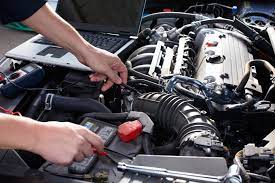
“ Sensors! Cars! Tuning!.“ Too much technicality, isn’t it? Let’s break it down in a simpler form of words and that too from the very basics.
What are sensors?
Car sensors serve the purpose of checking fuel-air mixture, incoming air temperature, wheel speed, and manifold pressure. They then tell your vehicle’s computer what to do, based on that information.
So, gone are the days when you could turn a screw on a carburetor to tune up an engine. Today’s engines contain sensors to tell the vehicle’s computer what’s going on.
What is car sensor tuning?
Sensor tuning ensures that these sensors are in their best condition to accomplish all the tasks that are assigned to them. This assurance is of utmost importance as there are a plethora of functions that car sensors have to perform.
To understand the importance of sensor tuning, you need to understand the importance of a tuned car sensor. So, let’s begin!
Advantageous of Tuned Car Sensors
1. Enables connection without host computer
All sensors inside the vehicle are connected to the ECU that simplifies the communication between various components and devices, and saves from the bundles of long and entangled wires.
It is installed in the vehicle and connected to the closest vehicle bus, including controller area network (CAN), local interconnect network (LIN), FlexRay and BroadR-Reach, among others.
This enables sensors and other devices to stay connected without a host computer. But only a tuned sensor can perform this job efficiently.
2. Emission control system that works through sensors
Finally, your emission system controls the emissions, exhaust and pollutants; using an array of sensors, computerized engine controls and exhaust components.
After sensing fuel level and analyzing fuel quantity, the ECU sends signals to different relays and actuators, including ignition circuit, spark plugs, fuel injectors, engine idling air control valve and exhaust gas recirculation (EGR) valve.
This results in reducing the emission to its lowest level.
3. Oxygen sensor for determining ideal oxygen proportion
The oxygen sensor is located in the emission system and keeps the emissions in check. The result is top-notch performance as well as the regulated emission of gases.
It comes in handy in the present time when several lobby group are pushing for reduced pollution from automobile.
4. Crankshaft sensors
It is an electric component present in both diesel and petrol engines. This sensor monitors the position and the crankshaft’s rotating speed, an important part of the vehicle.
The engine management unit uses the information from the sensor to control a variety of engine variable such as fuel injection and ignition timing.
Summary
Today, electronic sensor systems and engine computers do everything, from regulating and monitoring fuel to diagnosing problems.
Sensors play an important role in the automobile manufacturing industry. Hybrid vehicles require more sophistication in sensing and control. This requires a wide range of sensors, all operating properly.
And the importance of car sensors highlights the importance of car sensor tuning. Only tuned sensors can perform their task with full of their efficiency and can bestow you all the above mentioned benefits.







